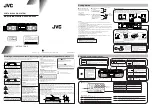
Simple Network Management Protocol
Understanding SNMP
2
Cisco 3200 Series Wireless MIC Software Configuration Guide
SNMP Versions
This software release supports these SNMP versions:
•
SNMPv1—The Simple Network Management Protocol, a full Internet standard, defined in
RFC 1157.
•
SNMPv2C, which has these features:
–
SNMPv2—Version 2 of the Simple Network Management Protocol, a draft Internet standard,
defined in RFCs 1902 through 1907.
–
SNMPv2C—The Community-based Administrative Framework for SNMPv2, an experimental
Internet protocol defined in RFC 1901.
SNMPv2C replaces the Party-based Administrative and Security Framework of SNMPv2Classic with
the Community-based Administrative Framework of SNMPv2C while retaining the bulk retrieval and
improved error handling of SNMPv2Classic.
Both SNMPv1 and SNMPv2C use a community-based form of security. The community of managers
able to access the agent’s MIB is defined by an IP address access control list and password.
SNMPv2C includes a bulk retrieval mechanism and more detailed error message reporting to
management stations. The bulk retrieval mechanism retrieves tables and large quantities of information,
minimizing the number of round-trips required. The SNMPv2C improved error-handling includes
expanded error codes that distinguish different kinds of error conditions; these conditions are reported
through a single error code in SNMPv1. Error return codes now report the error type.
You must configure the SNMP agent to use the version of SNMP supported by the management station.
An agent can communicate with multiple managers; therefore, you can configure the software to support
communications with one management station using the SNMPv1 protocol and another using the
SNMPv2 protocol.
SNMP Manager Functions
The SNMP manager uses information in the MIB to perform the operations described in
Table 1
.
Table 1
SNMP Operations
Operation
Description
get-request
Retrieves a value from a specific variable.
get-next-request
Retrieves a value from a variable within a table.
1
1.
With this operation, an SNMP manager does not need to know the exact variable name. A sequential search is performed to
find the needed variable from within a table.
get-bulk-request
2
2.
The
get-bulk
command works only with SNMPv2.
Retrieves large blocks of data that would otherwise require the transmission of
many small blocks of data, such as multiple rows in a table.
get-response
Replies to a get-request, get-next-request, and set-request sent by an NMS.
set-request
Stores a value in a specific variable.
trap
An unsolicited message sent by an SNMP agent to an SNMP manager when some
event has occurred.
















































